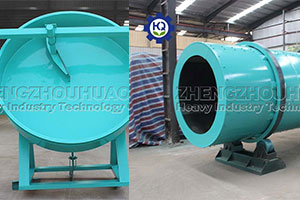
In fertilizer production, the choice of granulator directly affects granule shape, strength, and performance. Different granulation techniques produce distinct granule shapes suited for specific fertilizer types and market needs.
1.Rotary Drum Granulator: Spherical granules, smooth surface
Produces typically round, smooth-surfaced granules with uniform size. This shape works well for compound fertilizers, organic fertilizers, and BB blends, offering good flowability and crush strength for mechanical application.
2.Double Roller Press Granulator: Oblate or hemispherical granules
Forms mostly flat-round or half-spherical granules, sometimes with slight burrs on edges. The dense structure resists breakage, making it suitable for high-concentration compound fertilizers or organic-inorganic blends.

3.Flat Die Granulator: Cylindrical granules, varying lengths
Creates short cylindrical pellets with consistent diameter but lengths that may vary. These high-hardness granules fit organic fertilizers, bio-organic fertilizers, and feed additives.
4.Disc Granulator: Near-spherical granules, mixed sizes
Similar to rotary drum granulation but yields less regular, near-spherical shapes with a wider particle size range. Ideal for initial processing of organic or compound fertilizers—cost-effective but less uniform.
In short, selecting the right granulator improves fertilizer quality and production efficiency.